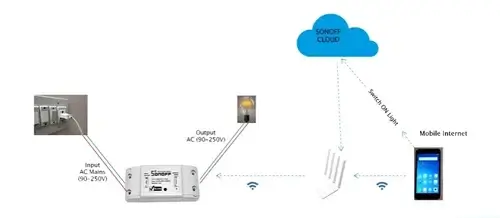Depth Gauges and IoT: Smarter Measurement for Modern Industries
In industries where precision and safety matter, depth measurement plays a crucial role. From monitoring water levels in tanks to ensuring safe excavation limits at construction sites, knowing the exact depth of a material or space is essential. Traditionally, this job was done using mechanical depth gauges, but today, with the power of IoT (Internet of Things), these instruments have become smarter, faster, and more connected than ever.
What Is a Depth Gauge?
A depth gauge is a measuring instrument used to determine the depth of a hole, slot, cavity, liquid, or any recessed surface. Depending on the application, it can come in various forms — from simple mechanical scales to advanced digital sensors.
Common types include:
- Mechanical depth gauges for basic measurements.
- Digital depth gauges that provide precise readings.
- Ultrasonic or pressure-based gauges for liquid and underwater depth measurement.
By integrating IoT technology, these gauges no longer just “measure” depth — they now collect, transmit, and analyze data in real time.
How IoT Transforms Depth Gauges
Before IoT, depth gauges required manual readings, which were prone to errors and delays. Now, with IoT-enabled systems, sensors continuously monitor depth and send live data to cloud-based platforms.
Here’s how it works:
- A depth sensor measures the level using methods like ultrasonic waves or pressure changes.
- The data is transmitted through wireless networks (like Wi-Fi, Bluetooth, or LoRa).
- IoT dashboards process and visualize this data, allowing operators to track changes anytime, anywhere.
This setup ensures that any abnormal change in depth — such as a sudden drop in water level or an overfilled tank — triggers an automatic alert, preventing potential damage or safety risks.
Real-World Applications
Depth gauges integrated with IoT are used across several industries. Some examples include:
- Water management: IoT-connected depth gauges help municipalities and industries monitor water reservoirs, pipelines, and treatment plants. Real-time data helps detect leaks or overflow before they become serious issues.
- Oil and gas: Depth sensors monitor drilling depths and well pressures, ensuring safe and efficient operations.
- Construction: Smart gauges measure excavation depth, ensuring compliance with design and safety limits.
- Agriculture: Farmers use IoT depth sensors in irrigation systems to track water levels and optimize usage.
For instance, in a smart irrigation setup, an IoT depth gauge installed in a water tank can automatically trigger pumps when water drops below a certain level and turn them off when the tank is full.
Advantages of IoT-Enabled Depth Gauges
IoT integration makes these devices far more powerful and practical. Some key benefits include:
- Remote Monitoring: Check depth readings from any location using mobile apps or dashboards.
- Real-Time Alerts: Get notified instantly about overflows, leaks, or abnormal readings.
- Data Analytics: Use historical data to predict trends or plan maintenance.
- Automation: Integrate with control systems to manage pumps or valves automatically.
- Safety and Accuracy: Reduce manual intervention and human error.
In short, IoT makes depth measurement not just smarter, but also more actionable.
The Future of Depth Measurement
As IoT continues to evolve, depth gauges will become even more efficient and connected. We can expect innovations like AI-based anomaly detection, solar-powered sensors, and edge computing for faster data processing. These advancements will allow industries to monitor depth parameters more sustainably and securely.
Conclusion
Depth gauges may seem simple, but in an IoT ecosystem, they’re anything but. By combining traditional measurement tools with modern connectivity, they give industries the power to make faster, smarter decisions. Whether it’s tracking water levels, controlling machinery, or ensuring construction safety, IoT-enabled depth gauges are quietly redefining how we measure the world beneath the surface.




